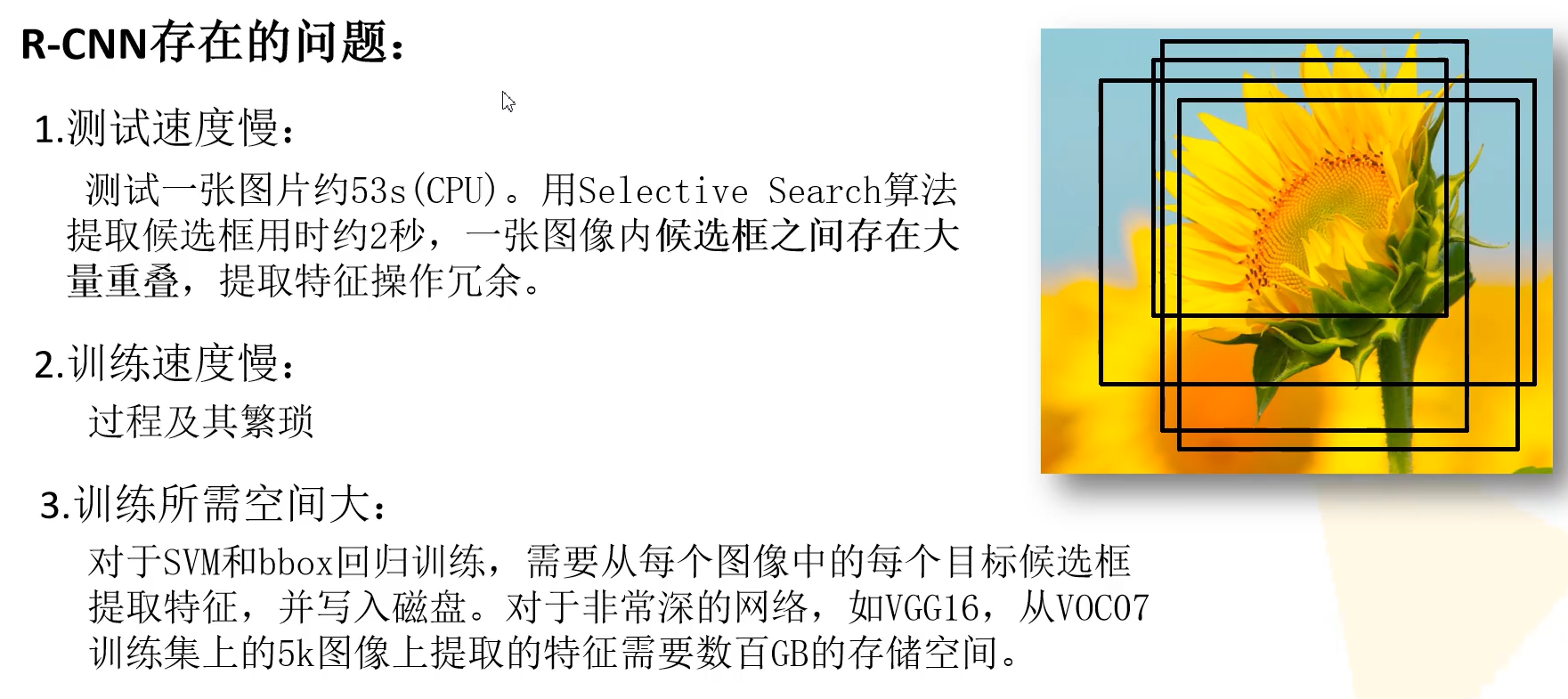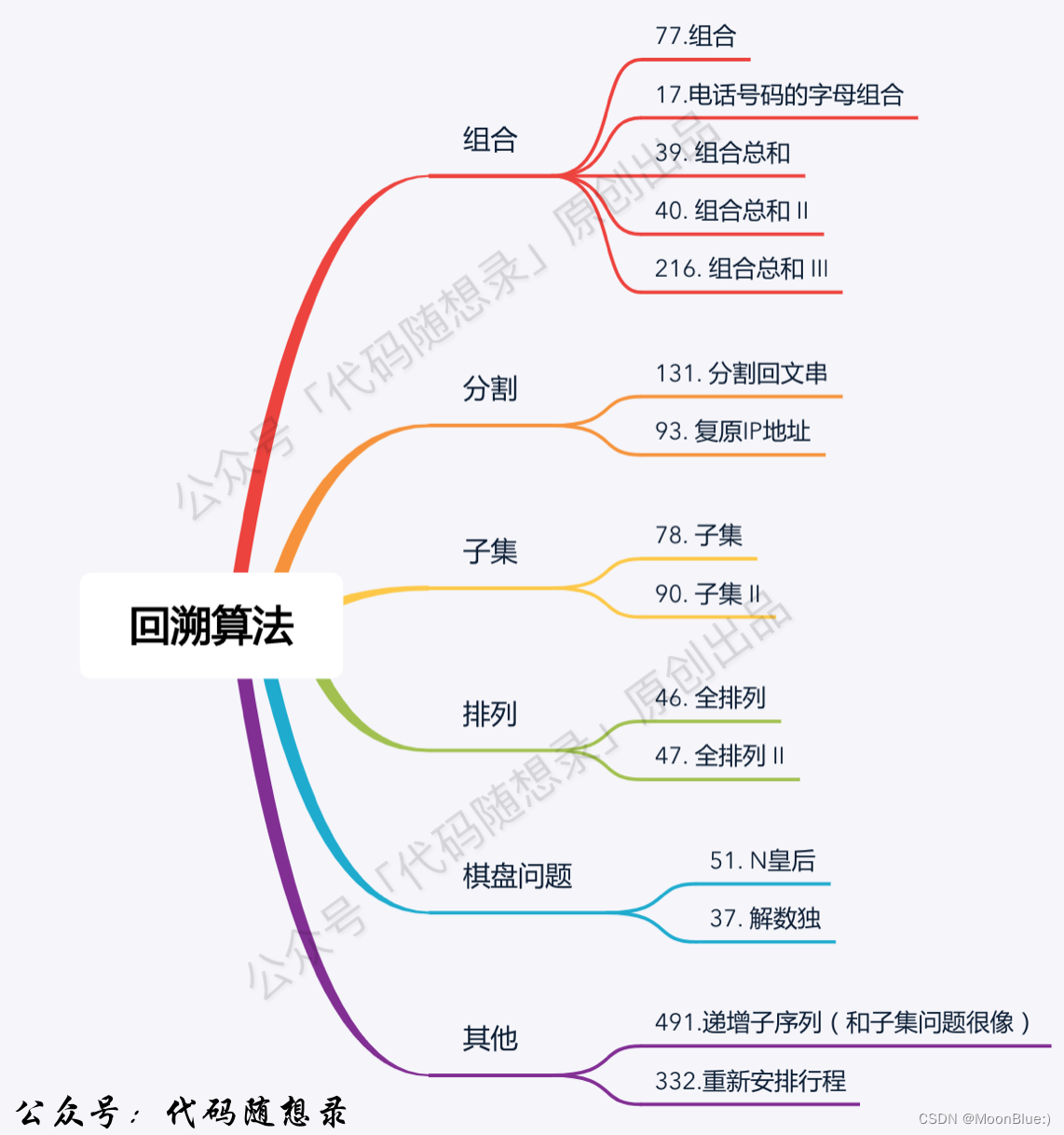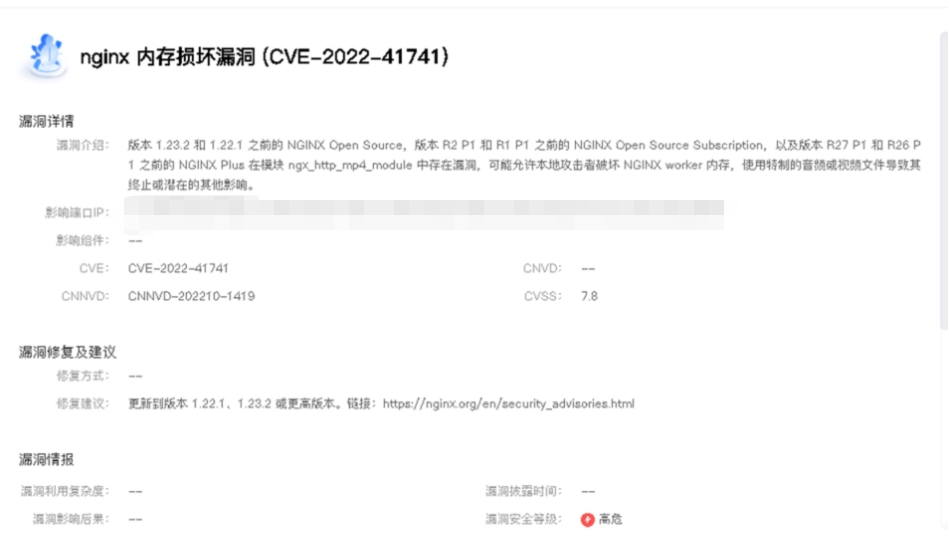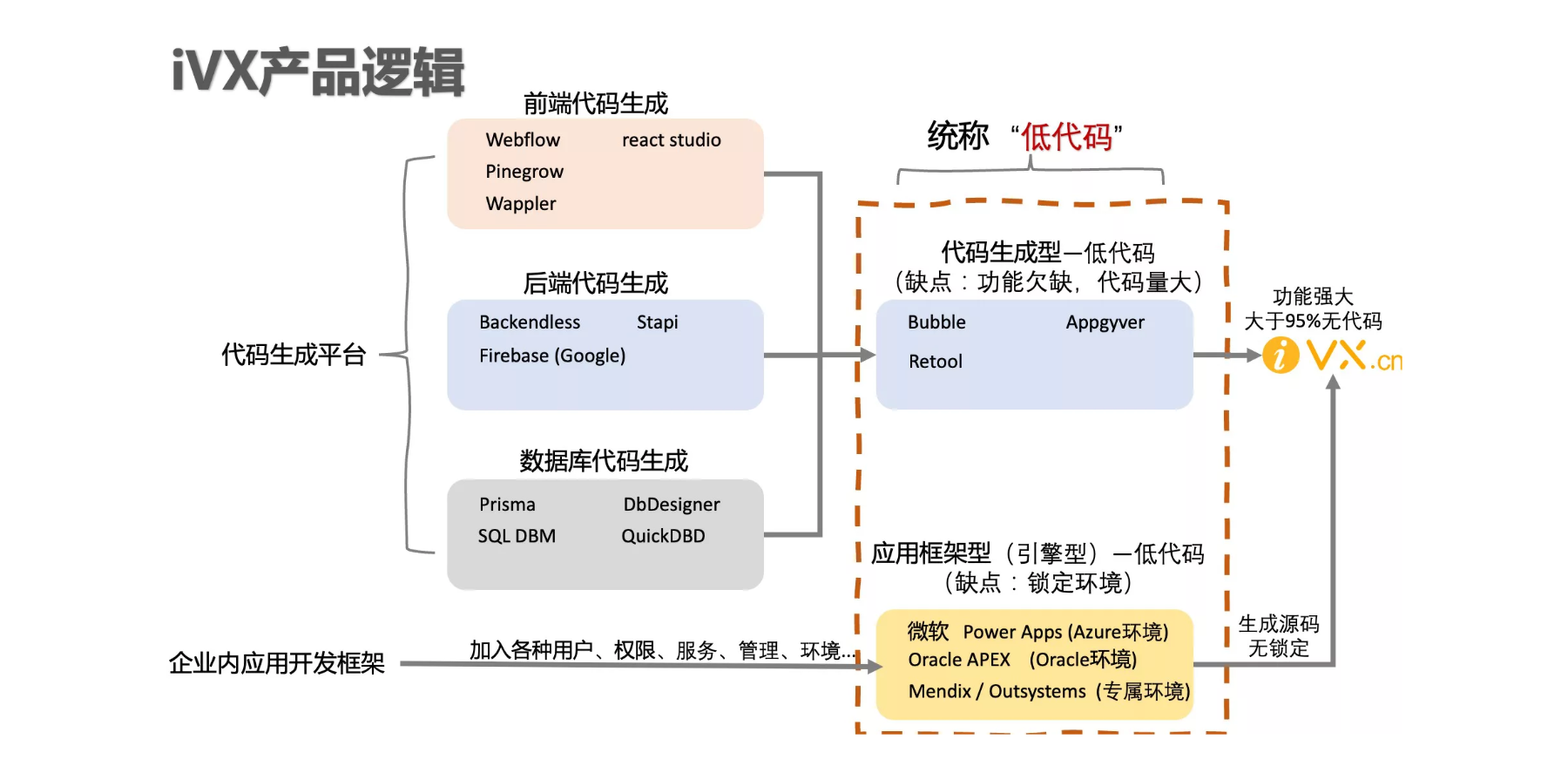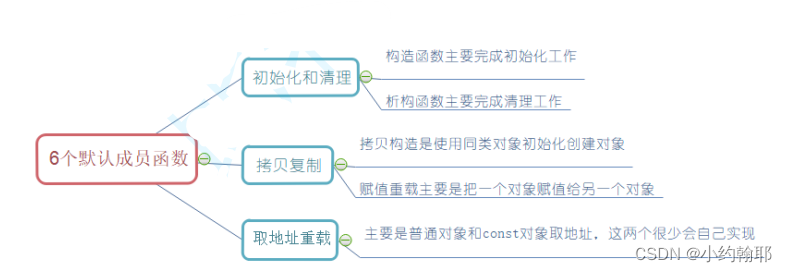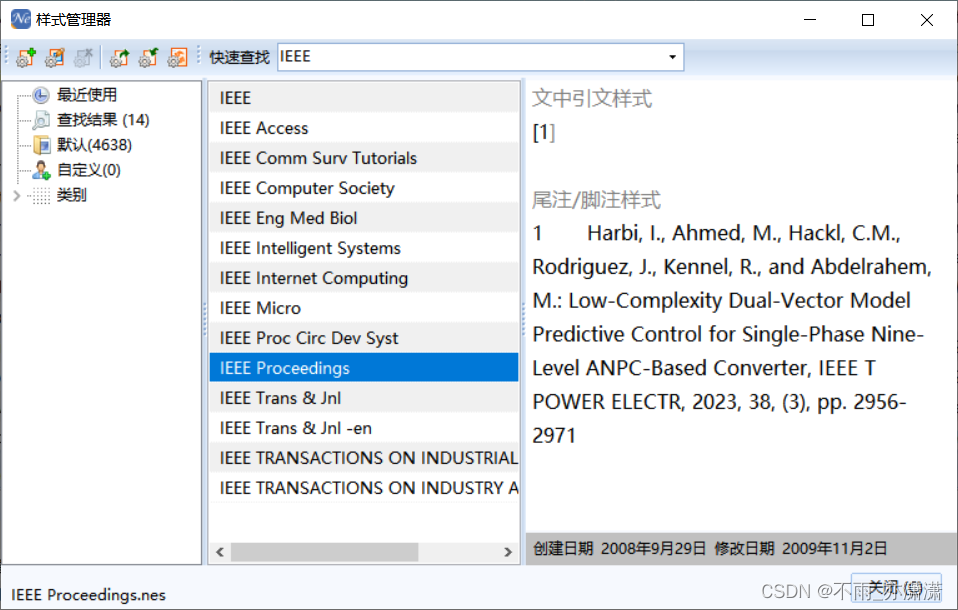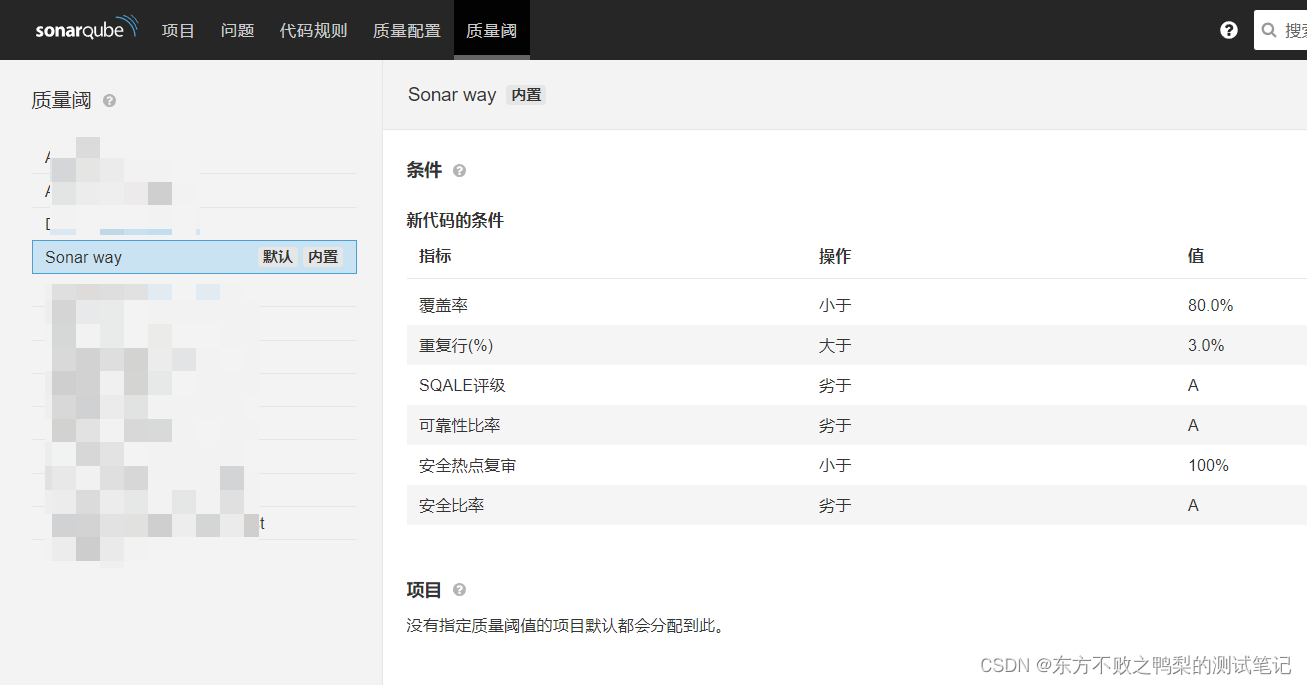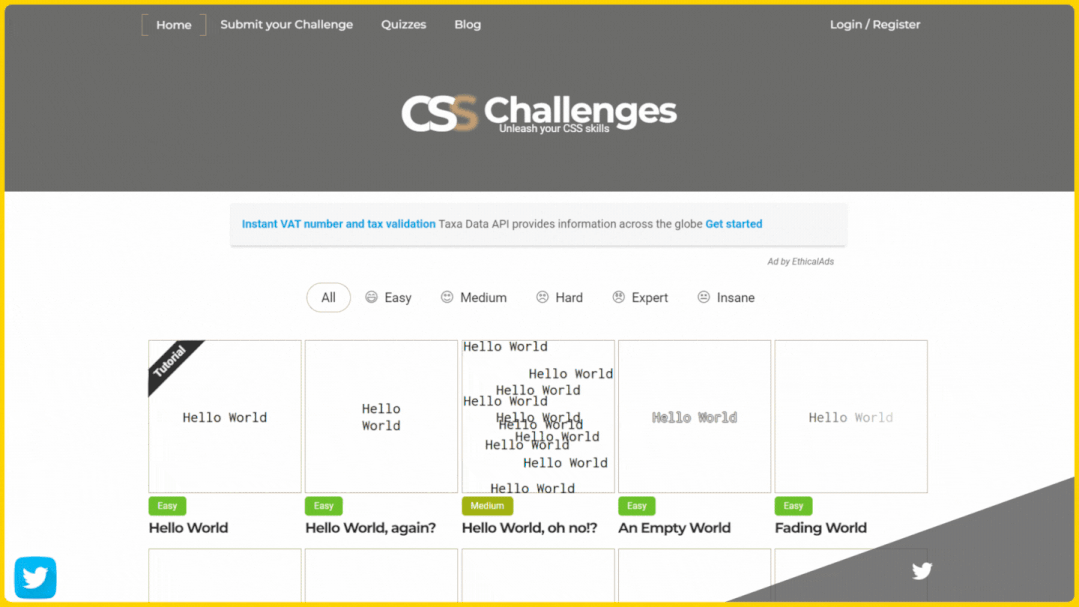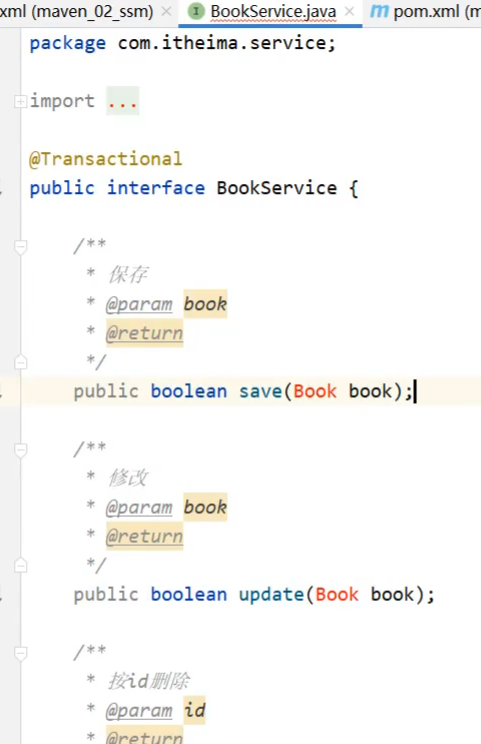Gradle+组件化开发
- Gradle
- 一.什么是gradle?
- 二.gradle优势
- 三.project和module的关系
- 三.project.gradle和module.gradle的区别
- 组件化开发
- 一.背景
- 二.项目结构
- 三.组件开发代码配置
- 四.BuildSrc组件化开发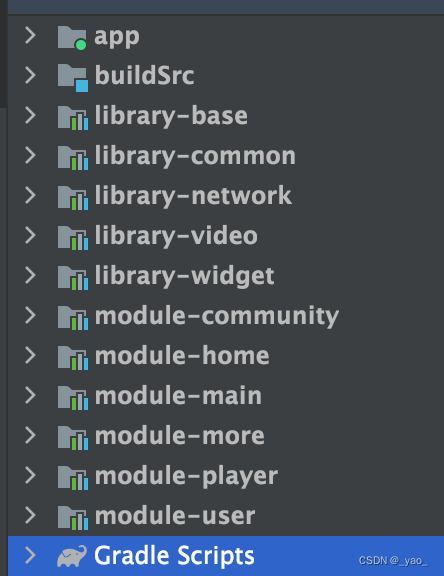
Gradle
一.什么是gradle?
Gradle是一个基于JVM的构建工具,其 build 脚本使用 groovy dsl 编写。
Gradle 的核心在于基于 Groovy的丰富而可扩展的域描述语言(DSL)。 Groovy 通过声明性的语言元素将基于声明的构建推向下层,你可以按你想要的方式进行组合。
二.gradle优势
三.project和module的关系
一个project里面可以有多个module,module可以是application,也可以是library。
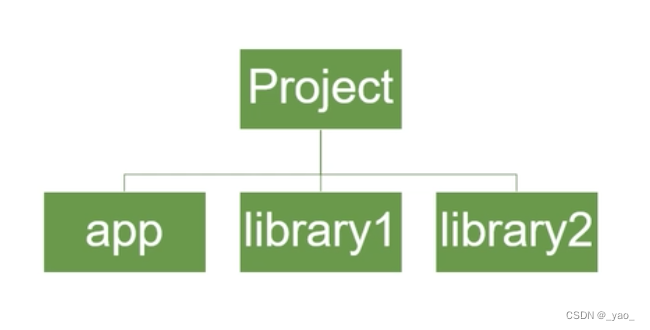
plugins {
id 'com.android.library'
id 'org.jetbrains.kotlin.android'
}
plugins {
id 'com.android.application'
id 'org.jetbrains.kotlin.android'
}
application中引用library
implementation project(':library-network')
三.project.gradle和module.gradle的区别
1.setttings.gradle是project级别
pluginManagement {
repositories {
//插件仓库地址
gradlePluginPortal()
google()
mavenCentral()
}
}
dependencyResolutionManagement {
repositoriesMode.set(RepositoriesMode.FAIL_ON_PROJECT_REPOS)
repositories {//依赖的远程仓库地址
google()
mavenCentral()
//国内仓库
maven {
url 'https://maven.aliyun.com/repository/google'
}
maven {
url 'https://maven.aliyun.com/repository/gradle-plugin'
}
maven {
url 'https://maven.aliyun.com/repository/jcenter'
}
maven {
url 'https://maven.aliyun.com/repository/public'
}
maven {
url 'https://maven.aliyun.com/repository/central'
}
maven {
url 'https://plugins.gradle.org/m2/com/gradle'
}
maven { url 'https://jitpack.io' }
}
}
//项目名称
rootProject.name = "openEye"
//module
include ':app'
include ':library-base'
include ':library-common'
include ':library-network'
include ':library-video'
include ':library-widget'
include ':module-main'
include ':module-home'
include ':module-community'
include ':module-more'
include ':module-player'
include ':module-user'
2.project.gralde文件插件
plugins {
id 'com.android.application' version '7.2.1' apply false //application插件
id 'com.android.library' version '7.2.1' apply false//library插件
id 'org.jetbrains.kotlin.android' version '1.6.10' apply false//kotlin插件
id 'com.google.dagger.hilt.android' version '2.44' apply false //依赖注入插件
}
task clean(type: Delete) {
delete rootProject.buildDir
}
3.module.gralde文件
plugins {
//使用插件
id 'com.android.application'
id 'org.jetbrains.kotlin.android'
id 'com.google.dagger.hilt.android' //hilt插件
id 'kotlin-kapt'//kotlin注解
}
//签名密钥
def keystorePropertiesFile = rootProject.file("keystore.properties")
def keystoreProperties = new Properties()
keystoreProperties.load(new FileInputStream(keystorePropertiesFile))
android {
//
compileSdk Versions.compileSdk
defaultConfig {
applicationId Versions.applicationId
minSdk Versions.minSdk
targetSdk Versions.targetSdk
versionCode Versions.versionCode
versionName Versions.versionName
testInstrumentationRunner "androidx.test.runner.AndroidJUnitRunner"
}
//签名配置
signingConfigs {
release {
keyAlias keystoreProperties['keyAlias']
keyPassword keystoreProperties['keyPassword']
storeFile file(keystoreProperties['storeFile'])
storePassword keystoreProperties['storePassword']
}
}
//打包时候代码混淆以及对应的混淆规则以及签名配置
//release 发布版本 debug调试版本
buildTypes {
release {
minifyEnabled true //开启混淆
shrinkResources true //移除未使用资源
proguardFiles getDefaultProguardFile('proguard-android-optimize.txt'), 'proguard-rules.pro'
signingConfig signingConfigs.release//设置使用的签名
}
}
//编辑的jdk版本
compileOptions {
sourceCompatibility JavaVersion.VERSION_1_8
targetCompatibility JavaVersion.VERSION_1_8
}
//kotlin jvm版本
kotlinOptions {
jvmTarget = '1.8'
}
sourceSets {
main{
if (isModule.toBoolean()){
//单独运行
manifest.srcFile 'src/main/alone/AndroidManifest.xml'
}
else {
//合并到宿主中
manifest.srcFile 'src/main/AndroidManifest.xml'
resources{
//正式版本时.剔除debug文件夹下的所有调式文件
exclude 'src/debug/*'
}
}
}
}
//统一资源前缀,规范资源引用
resourcePrefix "app_"
//开启dataBinding
dataBinding{
enabled true
}
}
//依赖
dependencies {
implementation Libs.coreKtx
implementation Libs.appcompat
implementation Libs.material
implementation Libs.constraintlayout
testImplementation Libs.junit
androidTestImplementation Libs.junitTest
androidTestImplementation Libs.espresso_core
implementation project(':library-network')
依赖的添加:分为依赖本地SDK、依赖本地module、依赖远程库
implementation fileTree(dir: 'libs', include: ['*.aar', '*.jar'], exclude: [])//依赖libs目录下的所有相关类型文件
implementation project(path: ':ZXingForAndroid')//依赖本地module
implementation files('libs/Msc.jar')//依赖本地库
//远程依赖库
implementation('com.alibaba:QLExpress:3.2.0'){exclude group: 'com.android.support', module:'design' }// 加载时排除框架中的design包
defaultConfig块
compileSdk Versions.compileSdk
defaultConfig {
applicationId Versions.applicationId
minSdk Versions.minSdk
targetSdk Versions.targetSdk
versionCode Versions.versionCode
versionName Versions.versionName
testInstrumentationRunner "androidx.test.runner.AndroidJUnitRunner"
}
compileSdk:编译代码所需要的sdk版本,要与sdk manager里main下载的sdk platforms对应,也就是compileSdk使用的版本必须在sdk manager中已经下载了
minSdk:app可运行的手机设本的最小版本
targetSdk:标识该app是为某个版本的额手机设备而设计的,在这个目标版本的手机上做了充分测试。
buildTypes块:用于构建不同的apk
buildTypes {
release {
minifyEnabled true //开启混淆
shrinkResources true //移除未使用资源
proguardFiles getDefaultProguardFile('proguard-android-optimize.txt'), 'proguard-rules.pro'
signingConfig signingConfigs.release //设置使用的签名
}
debug {
debuggable true
}
custom {
minifyEnabled false
}
}
signingConfig块:签名
signingConfigs {
debug {//可以在bulidTypes下的signingConfig中引用
storeFile file('release.keystore')//签名文件路径
storePassword 'xxxxxx'
keyAlias 'androidreleasekey'
keyPassword '123456'
}
release {
storeFile file('release.keystore')
storePassword 'xxxxxx'
keyAlias 'androidreleasekey'
keyPassword '123456'
}
}
productFlavors 多渠道打包配置
flavorDimensions 'default' // 定义产品维度,所有渠道都要指定维度
productFlavors {
dev {// 每个环境包名不同
applicationId DEVELOP_PACKAGE_NAME as String
dimension "default"
// 自定义buildConfig.java中的变量供代码中使用
buildConfigField "String", "MODE", '"develop"'
}
prod {
applicationId PROD_PACKAGE_NAME as String
dimension "default"
buildConfigField "String", "MODE", '"production"'
}
productFlavors.all { flavor ->
flavor.manifestPlaceholders += [CHANNEL_VALUE: name]
if (name.equals('dev')) { //开发环境
flavor.manifestPlaceholders += [APP_NAME: DEV_APP_NAME as String]
flavor.manifestPlaceholders += [APP_ICON: DEV_APP_ICON as String]
flavor.manifestPlaceholders += ["apk.applicationId" : DEV_PACKAGE_NAME as String]
} else if (name.equals('prod')) { //生产环境
flavor.manifestPlaceholders += [APP_NAME: PROD_APP_NAME as String]
flavor.manifestPlaceholders += [APP_ICON: PROD_APP_ICON as String]
flavor.manifestPlaceholders += ["apk.applicationId" : PROD_PACKAGE_NAME as String]
}
//打包配置
applicationVariants.all { variant ->
def name = variant.flavorName
variant.outputs.all {//设置输出apk的文件名
if (name.equals('dev')){
outputFileName = "app-debug-${variant.versionName}.apk"
}else if (name.equals('prod')) {
outputFileName = "app-prod-${variant.versionName}.apk"
}
}
}
}
}
SourceSets配置
sourceSets {
main {
manifest.srcFile 'AndroidManifest.xml'
java.srcDirs = ['src']
resources.srcDirs = ['src']
aidl.srcDirs = ['src']
renderscript.srcDirs = ['src']
res.srcDirs = ['res']
assets.srcDirs = ['assets']
jniLibs.srcDirs = ['src/main/jniLibs']
java {
exclude '/test/**' // 不想包含文件的路径
}
}
}
可以加逻辑判断,比如通过flag判断使用哪个manifest,组件化开发的时候使用到
sourceSets {
main {
if (DEBUG) {
manifest.srcFile 'src/main/debug/AndroidManifest.xml'
} else {
manifest.srcFile 'src/main/AndroidManifest.xml'
}
}
}
NDK配置:NDK和JNI后面讲解
1)defaultConfig{}中的 ndk.abiFilters 属性,配置ndk链接库支持的cpu架构
2)externalNativeBuild{}中配置cmake
externalNativeBuild {
cmake {
path "CMakeLists.txt"
cppFlags '-std=c++11'
arguments '-DANDROID_PLATFORM=android-21',
'-DANDROID_TOOLCHAIN=clang',
'-DANDROID_STL=c++_shared'
}
}
3)sourceSets中配置动态链接库的目录
sourceSets {
main {
jniLibs.srcDirs = ['src/main/jniLibs']
}
}
4)android{}中的ndkVersion 属性,配置ndk版本号
发布到局域网私有仓库在要发布的module的bulid.gradle中添加配置
apply plugin: 'maven'
//...其它配置
//将源码打包 为了保证引入的aar 包可以查看源码
task androidSourcesJar(type: Jar) {
classifier = 'sources'
from android.sourceSets.main.java.srcDirs
}
//包含文档和源码的aar
artifacts {
archives androidSourcesJar
}
//上传到Maven仓库的task
uploadArchives {
repositories {
mavenDeployer {
//指定maven仓库url
repository(url: "http://10.10.25.223:8081/repository/maven-releases/") {
//nexus登录默认用户名和密码
authentication(userName: "admin", password: "123456")
}
pom.groupId = "com.test.camera"// 唯一标识(通常为模块包名,也可以任意)
pom.artifactId = "CameraMix" // 项目名称(通常为类库模块名称,也可以任意)
pom.version = "1.0.0" // 版本号
}
}
}
组件化开发
视频学习:https://www.bilibili.com/video/BV1oK4y1R7Hx/?spm_id_from=333.337.search-card.all.click&vd_source=d61c44703fccc74954c692402d0116b8
一.背景
一个app随着业务增加,代码放在同一个模块中会越来越臃肿,同时也导致多人开发的一个难度。组件化可以把业务单独分出来,形成一个单独模块,可单独运行、测试等,相互之间不会影响。
另外一个优势,如果一个公司有多个app,总会出现一些相同业务,如登录/注册。我们可以单独把公共业务封装成一个单独模块,供所以app使用,提高了开发成本
二.项目结构
如下图1:
项目分成了4层,第一层app壳,这个也就是我们主工程, 里面包含application,启动页,以及一些初始化操作。第二层为module层,也就是我们的具体业务模块,具体需要看业务。第三层公共资源库,所有module都依赖此lib库。第四层为工具层,我们可以封装一些常用的网络请求,图片框架等
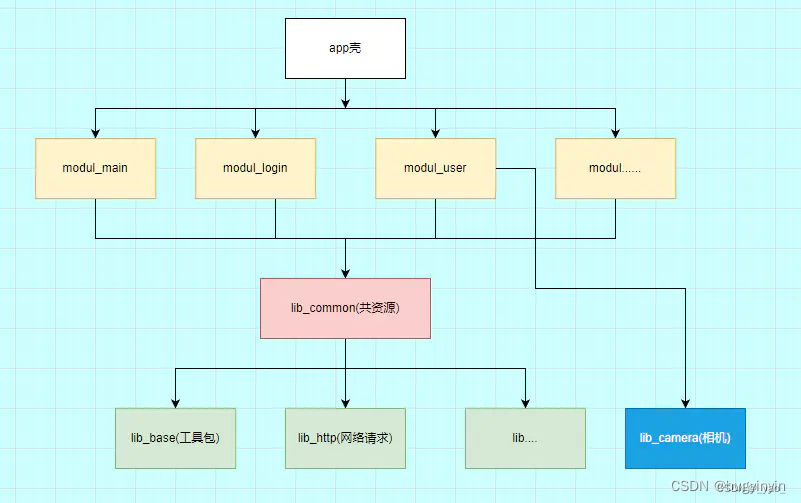
三.组件开发代码配置
1.先给大家看下工程主要目录结构
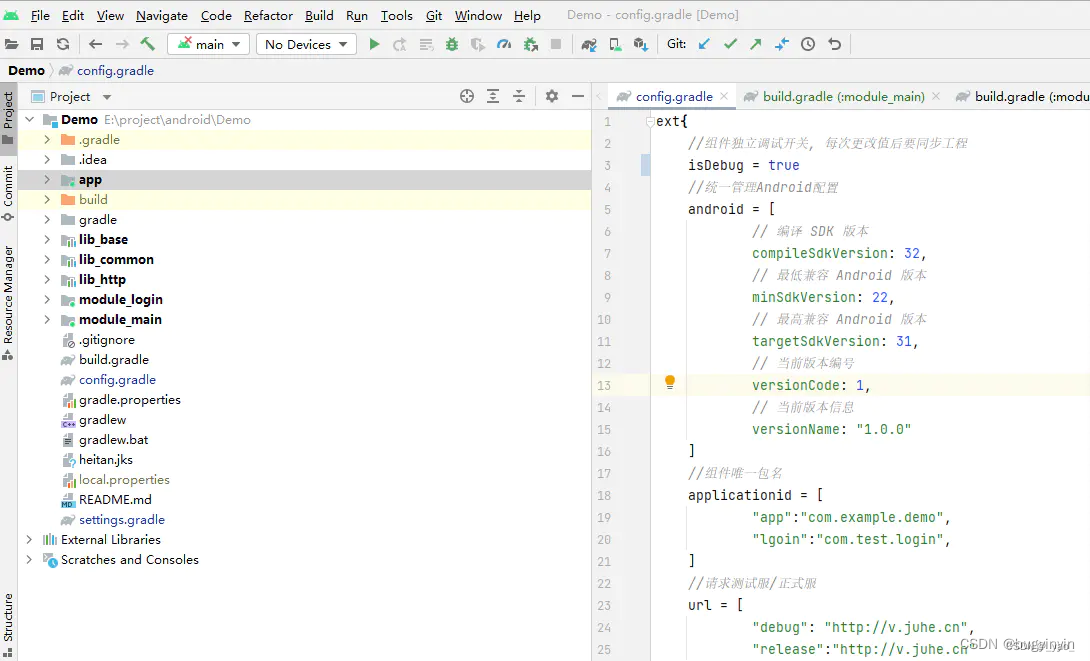
2.在project目录下创建一个全局的config.gradle配置文件。具体每个字段作用,看代码注释,这里就不作讲解了
ext{
//组件独立调试开关, 每次更改值后要同步工程
isDebug = false
//统一管理Android配置
android = [
// 编译 SDK 版本
compileSdkVersion: 32,
// 最低兼容 Android 版本
minSdkVersion: 22,
// 最高兼容 Android 版本
targetSdkVersion: 31,
// 当前版本编号
versionCode: 1,
// 当前版本信息
versionName: "1.0.0"
]
//组件唯一包名
applicationid = [
"app":"com.example.demo",
"lgoin":"com.test.login",
]
//请求测试服/正式服
url = [
"debug": "http://v.juhe.cn",
"release":"http://v.juhe.cn"
]
//统一管理module的第三方依赖
dependencies = [
corektx: 'androidx.core:core-ktx:1.7.0',
appcompat: 'androidx.appcompat:appcompat:1.3.0',
material: 'com.google.android.material:material:1.4.0',
constraintlayout: 'androidx.constraintlayout:constraintlayout:2.0.4',
junit: 'junit:junit:4.13.2',
junittest: 'androidx.test.ext:junit:1.1.3',
espressocore: 'androidx.test.espresso:espresso-core:3.4.0',
]
//路由
libARouter= 'com.alibaba:arouter-api:1.5.2'
libARouterCompiler = 'com.alibaba:arouter-compiler:1.5.2'
//Gson解析
libGson = 'com.google.code.gson:gson:2.8.9'
}
3.引入config.gradle配置文件,在project全局中build.grale文件添加 apply from:“config.gradle”
plugins {
id 'com.android.application' version '7.2.1' apply false
id 'com.android.library' version '7.2.1' apply false
id 'org.jetbrains.kotlin.android' version '1.6.10' apply false
}
//引入config全局配置文件
apply from:"config.gradle"
task clean(type: Delete) {
delete rootProject.buildDir
}
4.配置module,通过全局配置文件中的 isDebug 控制,来实现module和library之间的转换,我们对module中的build.grale文件作一下修改(这里修改的是module_login下面的)
apply from: '../config.gradle'
if (isDebug){
apply plugin: 'com.android.application'
}else {
apply plugin: 'com.android.library'
}
apply plugin:'org.jetbrains.kotlin.android'
apply plugin: 'kotlin-kapt'
android {
compileSdk rootProject.ext.android.compileSdkVersion
defaultConfig {
if (isDebug){
applicationId rootProject.ext.applicationid.lgoin
}
minSdk rootProject.ext.android.minSdkVersion
targetSdk rootProject.ext.android.targetSdkVersion
versionCode rootProject.ext.android.versionCode
versionName rootProject.ext. android.versionName
testInstrumentationRunner "androidx.test.runner.AndroidJUnitRunner"
//kotlin 路由配置
kapt {
arguments {
arg("AROUTER_MODULE_NAME", project.getName())
}
}
}
buildTypes {
release {
minifyEnabled false
proguardFiles getDefaultProguardFile('proguard-android-optimize.txt'), 'proguard-rules.pro'
}
}
compileOptions {
sourceCompatibility JavaVersion.VERSION_1_8
targetCompatibility JavaVersion.VERSION_1_8
}
sourceSets{
main{
if (isDebug){
manifest.srcFile 'src/main/debug/AndroidManifest.xml'
}else {
manifest.srcFile 'src/main/AndroidManifest.xml'
}
}
}
kotlinOptions {
jvmTarget = '1.8'
}
}
dependencies {
implementation rootProject.ext.dependencies.corektx
implementation rootProject.ext.dependencies.appcompat
implementation rootProject.ext.dependencies.material
implementation rootProject.ext.dependencies.constraintlayout
testImplementation rootProject.ext.dependencies.junit
androidTestImplementation rootProject.ext.dependencies.junittest
androidTestImplementation rootProject.ext.dependencies.espressocore
implementation project(path: ':lib_common')
//kotlin路由配置
implementation rootProject.ext.libARouter
kapt rootProject.ext.libARouterCompiler
}
5.添加AndroidManifest.xml文件,这里解释下为什么要添加AndroidManifest.xml。当module作为library库时,AndroidManifest.xml里面的内容是有区别的
- 作为library,目录位置src/main/AndroidManifest.xml
<?xml version="1.0" encoding="utf-8"?>
<manifest xmlns:android="http://schemas.android.com/apk/res/android"
package="com.module.login">
<application>
<activity
android:name="com.module.login.TestActivity" />
</application>
</manifest>
- 作为module单独运行,目录位置src/main/debug/AndroidManifest.xml
<?xml version="1.0" encoding="utf-8"?>
<manifest xmlns:android="http://schemas.android.com/apk/res/android"
package="com.module.login">
<application
android:allowBackup="true"
android:icon="@mipmap/ic_launcher"
android:label="@string/app_name"
android:roundIcon="@mipmap/ic_launcher_round"
android:supportsRtl="true"
android:name="com.module.login.App"
android:theme="@style/Theme.Demo">
<activity
android:name="com.module.login.TestActivity"
android:exported="true">
<intent-filter>
<action android:name="android.intent.action.MAIN" />
<category android:name="android.intent.category.LAUNCHER" />
</intent-filter>
</activity>
</application>
</manifest>
6.完成上面几步,module_login模块就配置完了,其他module依照配置就可以了。另外需要注意,组件开发,一般会引入路由框架ARoute,实现模块之间的的跳转。
app模块以及所有的业务模块Arouter配置
common公共模块中配置路径,所有的业务模块均引用common公共模块
7.组件开发特别需要注意资源重名,为了避免这个问题,可以在module中的build.gradle中添加resourcePrefix “xxx_” 前缀提示,这样每次添加资源,系统会提示加前缀
四.BuildSrc组件化开发
1.项目根目录下创建buildSrc文件夹并创建build.gralde.kts文件
plugins {
`kotlin-dsl`
}
repositories {
maven {
setUrl("https://maven.aliyun.com/nexus/content/groups/public/")
}
mavenCentral()
flatDir {
dirs("libs")
}
}
2.在buildSrc下创建src/main/java目录并创建一个kt文件,取名Dependencies.kt
//版本号管理
object Versions{
const val applicationId = "com.bawei.openeye"
const val compileSdk = 32
const val targetSdk = 32
const val minSdk = 23
const val versionCode = 1
const val versionName = "1.0"
const val coreKtx = "1.7.0"
const val appcompat = "1.3.0"
const val material = "1.4.0"
const val constraintlayout = "2.0.4"
const val junit = "4.13.2"
const val junitTest = "1.1.3"
const val espresso_core = "3.4.0"
const val room_version = "2.4.0"
const val lifecycle_version = "2.5.1"
const val glide = "4.11.0"
// const val mmkv = "1.2.15"
const val fragmentKtx = "1.5.5"
const val retrofit2 = "2.9.0"
const val utilcodex = "1.30.6"
const val coroutines = "1.3.9"
const val flycotablayout = "2.0.2@aar"
const val banner = "1.4.10"
const val okhttp = "3.4.1"
const val okhttp_logging = "3.9.1"
const val rxjava = "2.2.7"
const val eventbus = "3.3.1"
const val arouter = "1.5.2"
const val smart = "2.0.5"
const val hilt = "2.44"
const val loadsir = "1.3.6"
const val rxpermissions = "0.10.2"
const val rxjava2 = "2.2.7"
const val immersionbar = "3.0.0"
const val mmkv = "1.2.15"
}
object Libs{
const val espresso_core = "androidx.test.espresso:espresso-core:${Versions.espresso_core}"
const val coreKtx = "androidx.core:core-ktx:${Versions.coreKtx}"
const val appcompat = "androidx.appcompat:appcompat:${Versions.appcompat}"
const val material = "com.google.android.material:material:${Versions.material}"
const val constraintlayout = "androidx.constraintlayout:constraintlayout:${Versions.constraintlayout}"
const val junit = "junit:junit:${Versions.junit}"
const val junitTest = "androidx.test.ext:junit:${Versions.junitTest}"
}
object Dependencies {
//jetpack
const val livedata = "androidx.lifecycle:lifecycle-livedata-ktx:${Versions.lifecycle_version}"
const val viewmodel = "androidx.lifecycle:lifecycle-viewmodel-ktx:${Versions.lifecycle_version}"
const val fragmentKtx = "androidx.fragment:fragment-ktx:${Versions.fragmentKtx}"
const val roomKtx = "androidx.room:room-ktx:${Versions.room_version}"
const val roomRxjava2 = "androidx.room:room-rxjava2:${Versions.room_version}"
const val roomRuntime = "androidx.room:room-runtime:${Versions.room_version}"
const val roomCompile = "androidx.room:room-compiler:${Versions.room_version}"
const val roomPaging = "androidx.room:room-paging:${Versions.room_version}"
const val hilt = "com.google.dagger:hilt-android:${Versions.hilt}"
const val hilt_compiler = "com.google.dagger:hilt-android-compiler:${Versions.hilt}"
//协程
const val coroutines = "org.jetbrains.kotlinx:kotlinx-coroutines-android:${Versions.coroutines}"
//retrofit
const val retrofit2 = "com.squareup.retrofit2:retrofit:${Versions.retrofit2}"
//rx
const val rxjava = "io.reactivex.rxjava2:rxjava:${Versions.rxjava}"
const val rxpermissions = "com.github.tbruyelle:rxpermissions:${Versions.rxpermissions}"
//gson解析器
const val converterGson = "com.squareup.retrofit2:converter-gson:${Versions.retrofit2}"
//glide
const val glide = "com.github.bumptech.glide:glide:${Versions.glide}"
//mmkv
const val mmkv = "com.tencent:mmkv:${Versions.mmkv}"
//okhttp
const val okhttp = "com.squareup.okhttp3:okhttp:${Versions.okhttp}"
const val okhttp_logging = "ccom.squareup.okhttp3:logging-interceptor:${Versions.okhttp_logging}"
//eventbus
const val eventbus = "org.greenrobot:eventbus:${Versions.eventbus}"
//ARouter
const val arouter = "com.alibaba:arouter-api:${Versions.arouter}"
const val arouter_compiler = "com.alibaba:arouter-compiler:${Versions.arouter}"
//刷新
const val loadsir = "com.kingja.loadsir:loadsir:${Versions.loadsir}"
const val immersionbar = "com.gyf.immersionbar:immersionbar:${Versions.immersionbar}"
}
3.gradle.properties
isModule = false
4.settings.gradle
pluginManagement {
repositories {
gradlePluginPortal()
google()
mavenCentral()
}
}
dependencyResolutionManagement {
repositoriesMode.set(RepositoriesMode.FAIL_ON_PROJECT_REPOS)
repositories {
google()
mavenCentral()
maven {
url 'https://maven.aliyun.com/repository/google'
}
maven {
url 'https://maven.aliyun.com/repository/gradle-plugin'
}
maven {
url 'https://maven.aliyun.com/repository/jcenter'
}
maven {
url 'https://maven.aliyun.com/repository/public'
}
maven {
url 'https://maven.aliyun.com/repository/central'
}
maven {
url 'https://plugins.gradle.org/m2/com/gradle'
}
maven { url 'https://jitpack.io' }
}
}
rootProject.name = "openEye"
include ':app'
include ':library-base'
include ':library-common'
include ':library-network'
include ':library-video'
include ':library-widget'
include ':module-main'
include ':module-home'
include ':module-community'
include ':module-more'
include ':module-player'
include ':module-user'
5.app主壳
plugins {
id 'com.android.application'
id 'org.jetbrains.kotlin.android'
id 'com.google.dagger.hilt.android' //hilt插件
id 'kotlin-kapt'//kotlin注解
}
def keystorePropertiesFile = rootProject.file("keystore.properties")
def keystoreProperties = new Properties()
keystoreProperties.load(new FileInputStream(keystorePropertiesFile))
android {
compileSdk Versions.compileSdk
defaultConfig {
applicationId Versions.applicationId
minSdk Versions.minSdk
targetSdk Versions.targetSdk
versionCode Versions.versionCode
versionName Versions.versionName
javaCompileOptions {
annotationProcessorOptions {
arguments = [AROUTER_MODULE_NAME: project.getName()]
}
}
testInstrumentationRunner "androidx.test.runner.AndroidJUnitRunner"
}
signingConfigs {
release {
keyAlias keystoreProperties['keyAlias']
keyPassword keystoreProperties['keyPassword']
storeFile file(keystoreProperties['storeFile'])
storePassword keystoreProperties['storePassword']
}
}
buildTypes {
release {
minifyEnabled true //开启混淆
shrinkResources true //移除未使用资源
proguardFiles getDefaultProguardFile('proguard-android-optimize.txt'), 'proguard-rules.pro'
signingConfig signingConfigs.release
}
}
compileOptions {
sourceCompatibility JavaVersion.VERSION_1_8
targetCompatibility JavaVersion.VERSION_1_8
}
kotlinOptions {
jvmTarget = '1.8'
}
sourceSets {
main{
if (isModule.toBoolean()){
//单独运行
manifest.srcFile 'src/main/alone/AndroidManifest.xml'
}
else {
//合并到宿主中
manifest.srcFile 'src/main/AndroidManifest.xml'
resources{
//正式版本时.剔除debug文件夹下的所有调式文件
exclude 'src/debug/*'
}
}
}
}
//统一资源前缀,规范资源引用
resourcePrefix "app_"
//开启dataBinding
dataBinding{
enabled true
}
}
dependencies {
implementation Libs.coreKtx
implementation Libs.appcompat
implementation Libs.material
implementation Libs.constraintlayout
testImplementation Libs.junit
androidTestImplementation Libs.junitTest
androidTestImplementation Libs.espresso_core
//宿主项目中判断组件是否需要独立运行
if (isModule.toBoolean()) {
//组件独立运行时,宿主项目直接依赖基础库,避免编译错误
implementation project(':library-base')
} else {
//主业务模块
implementation project(':module-main')
//首页模块
implementation project(':module-home')
//社区模块
implementation project(':module-community')
//更多模块
implementation project(':module-more')
//视频播放模块
implementation project(':module-player')
//用户模块
implementation project(':module-user')
}
}
